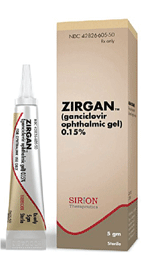 A 38-year-old woman—a new patient to your office—presents emergently with a unilateral red eye. In the exam room, the woman reports that her left eye has been red and uncomfortable for several days, though she has not been experiencing excessive pain. She claims to have a fair amount of tearing, however, and her vision in that eye is noticeably blurry.
A 38-year-old woman—a new patient to your office—presents emergently with a unilateral red eye. In the exam room, the woman reports that her left eye has been red and uncomfortable for several days, though she has not been experiencing excessive pain. She claims to have a fair amount of tearing, however, and her vision in that eye is noticeably blurry.
“By the way, this isn’t the first time I’ve had this problem,” she continues. “It’s happened twice before...”
With that bit of information in hand, you situate her behind the slit lamp, nearly certain of what you’ll find next.
Under white light, you see an irregularly shaped, superficial corneal excavation, with mild surrounding edema, but no infiltrate. Fluorescein dye causes the lesion to stain brightly, outlining a dendritic pattern that resembles a tree branch frosted by light snow.
Your suspicions are confirmed: the patient has herpes simplex keratitis.
As long as most of us can recall, the standard of care for treatment of herpetic corneal ulcers in the United States has been Viroptic (trifluridine 1%, Monarch Pharmaceuticals). Trifluridine is indicated for “the treatment of primary keratoconjunctivitis and recurrent epithelial keratitis due to herpes simplex virus, types 1 and 2.”1
Unfortunately, trifluridine eye drops have several shortcomings. The dosing is quite inconvenient; it requires administration every two hours while awake (up to nine times daily) until the corneal ulcer has completely re-epithelialized, followed by an additional seven days of administration every four hours (at least five times daily).1
More importantly, trifluridine has significant potential for toxicity to the cornea and other ocular tissues.2-7 Even the package insert explicitly states: “Continuous administration of trifluridine for periods exceeding 21 days should be avoided because of potential ocular toxicity.”1
No new ophthalmic antiviral agents have been introduced in the United States since Viroptic received FDA approval in 1980.
Although several new therapies for herpetic keratitis have been approved throughout the world, including 3% acyclovir ointment, none have made it to the Western hemisphere … that is, until now.

New Approval
On September 15, 2009, the FDA approved Zirgan (Sirion Therapeutics), a 0.15% formulation of ganciclovir in a topical gel form, “for the treatment of acute herpetic keratitis” (i.e., dendritic ulcers).8
Zirgan, which has been marketed in Europe under the trade name Virgan (Laboratoires Théa) since 1996, may represent ashift in viral ocular infection management for American physicians.9
Ganciclovir is a very unique medication. This guanosine derivative inhibits DNA replication in a number of viruses. Its antiviral mechanism involves transformation of the molecule by viral thymidine kinases (vTK) to ganciclovir triphosphate, which has a dual action on the target virus: one, it competitively inhibits the action of viral DNA-polymerase, slowing DNA synthesis; and two, it incorporates directly into the viral primer-strand DNA, resulting in DNA chain termination and effectively preventing viral replication.10
In contrast, trifluridine’s mechanism of action involves phosphorylation by both viral and cellular thymidine kinases, which results in DNA synthesis inhibition not only in viruses, but also in normal cells.
Because ganciclovir is activated only by vTK, its effect is rendered solely in virus-infected cells.11 From a clinical perspective, this helps to explain ganciclovir’s efficacy and significantly reduced toxicity vs. trifluridine. Though more than one million units of Virgan have been sold, there has yet to be a published report of significant adverse effects.
Clinical trials did record a number of mild adverse effects, however. Transient blurred vision was encountered in 60% of subjects, ocular irritation was noted in 20%, and punctate keratitis and conjunctival hyperemia were also seen in a small percentage of patients.8
Until recently, ganciclovir has been a therapy for cytomegalovirus retinitis, a sight-threatening complication of AIDS. But, research has shown that this agent has potent activity against several other viruses, including herpes simplex 1 and 2, herpes zoster, hepatitis B, and even some adenoviruses.9,12,13
As a therapy for herpes simplex keratitis, ganciclovir gel is administered five times daily (approximately every three hours while awake) until the corneal ulcer heals, and then three times per day for an additional seven days.
The reduced dosing is a function of both the drug’s improved efficacy as well as the vehicle, a viscous gel that enhances contact time on the ocular surface and facilitates greater drug concentration in corneal tissues.9
The recent FDA approval of Zirgan was actually based on the results of the Virgan clinical trials conducted in the 1990s by Laboratoires Théa in Europe, Asia and Africa. These studies compared the efficacy and tolerability of 0.15% ganciclovir gel to 3% acyclovir ophthalmic ointment in patients with herpetic keratitis.
In all, four randomized, comparative trials involving 376 patients were conducted.9,14,15 The results of these studies conclusively demonstrated that ganciclovir gel was as effective as topical acyclovir ointment in healing herpetic corneal ulcers—with fewer instances of blurring, stinging and ocular irritation.
In addition, there was an overall trend toward more rapid healing of the ulcers in the ganciclovir group, although this was not found to be statistically significant.
To date, there have been no published studies involving clinical, head-to-head comparisons between topical ganciclovir gel and trifluridine drops in a human population. Experimental animal models of herpes simplex keratitis, however, have shown that these two drugs are equivalent with regard to healing capability.16
Based upon its formulation, Zirgan should be very well tolerated by most patients; it has a pH of 7.45 and an osmolality of 300 milliosmoles, making it roughly equivalent to human tears. But remember, while this product has been heralded as a safer and more convenient alternative, topical ganciclovir gel is not without the potential for adverse reactions. As mentioned previously, some patients may experience mild irritation and transient visual disturbances upon instillation of the gel, as well as some redness and corneal staining in rare instances. Zirgan is approved for topical ophthalmic use only. 8 Patients are further advised not to wear contact lenses during the course of therapy with Zirgan for herpetic keratitis.8
Sirion Therapeutics, the company that manufactures and distributes Zirgan in the United States, expects the drug to be commercially available in the first quarter of 2010.
Drs. Kabat and Sowka have no financial interest in any of the products mentioned in this article.
1. Monarch Pharmaceuticals. Viroptic package insert. 2007.
2. La Lau C, Oosterhuis JA, Versteeg J, et al. Aciclovir and trifluorothymidine in herpetic keratitis. Preliminary report of a multicentered trial. Doc Ophthalmol. 1981 Mar 20;50(2):287-90.
3. Naito T, Shiota H, Mimura Y. Side effects in the treatment of herpetic keratitis. Curr Eye Res. 1987 Jan;6(1):237-9.
4. Millan-Parrilla F, De la CJ. Allergic contact dermatitis from trifluoridine in eyedrops. Contact Dermatitis. 1990 May;22(5):289.
5. Maudgal PC, Van Damme B, Missotten L. Corneal epithelial dysplasia after trifluridine use. Graefes Arch Clin Exp Ophthalmol. 1983;220(1):6-12.
6. Jayamanne DG, Vize C, Ellerton CR, et al. Severe reversible ocular anterior segment ischaemia following topical trifluorothymidine (F3T) treatment for herpes simplex keratouveitis. Eye. 1997;11 ( Pt 5):757-9.
7. Udell IJ. Trifluridine-associated conjunctival cicatrization. Am J Ophthalmol 1985 Mar 15;99(3):363-4.
8. Sirion Therapeutics. Zirgan package insert. 2009.
9. Colin J. Ganciclovir ophthalmic gel, 0.15%: a valuable tool for treating ocular herpes. Clinical Ophthalmology. 2007 Dec;1(4):441-53.
10. Hayden FG. Antiviral Agents (Nonretroviral). In: Brunton LL, Lazo JS, Parker KL, eds. Goodman and Gliman’s The Pharmacological Basis of Therapeutics. 11th edition. New York: McGraw-Hill, 2006:1243-71.
11. Kinchington PR, Romanowski EG, Jerold GY. Prospects for adenovirus antivirals. J Antimicrob Chemother. 2005 Apr;55(4):424-9.
12. Locarnini S, Guo K, Lucas R, Gust I. Inhibition of HBV DNA replication by ganciclovir in patients with AIDS. Lancet. 1989;8673:1225-6.
13. Taylor DL, Jeffries DJ, Taylor-Robinson D, et al. The susceptibility of adenovirus infection to the anti-cytomegalovirus drug, ganciclovir (DHPG). FEMS Microbiol Lett. 1988;49:337-41.
14. Colin J, Hoh HB, Easty DL, et al. Ganciclovir ophthalmic gel (Virgan; 0.15%) in the treatment of herpes simplex keratitis. Cornea. 1997 Jul;16(4):393-9.
15. Hoh HB, Hurley C, Claoue C, et al. Randomised trial of ganciclovir and acyclovir in the treatment of herpes simplex dendritic keratitis: a multicentre study. Br J Ophthalmol. 1996 Feb;80(2):140-3.
16. Kaufman HE. Ganciclovir: a promising topical antiviral gel for herpetic keratitis. Expert Rev Ophthalmol. 2009 August;4(4) 367-75.
Zirgan is supplied in a 5gm, sterile tube.
A classic herpes simplex dendritic ulcer. For such a presentation, there had been only one treatment, until now.

